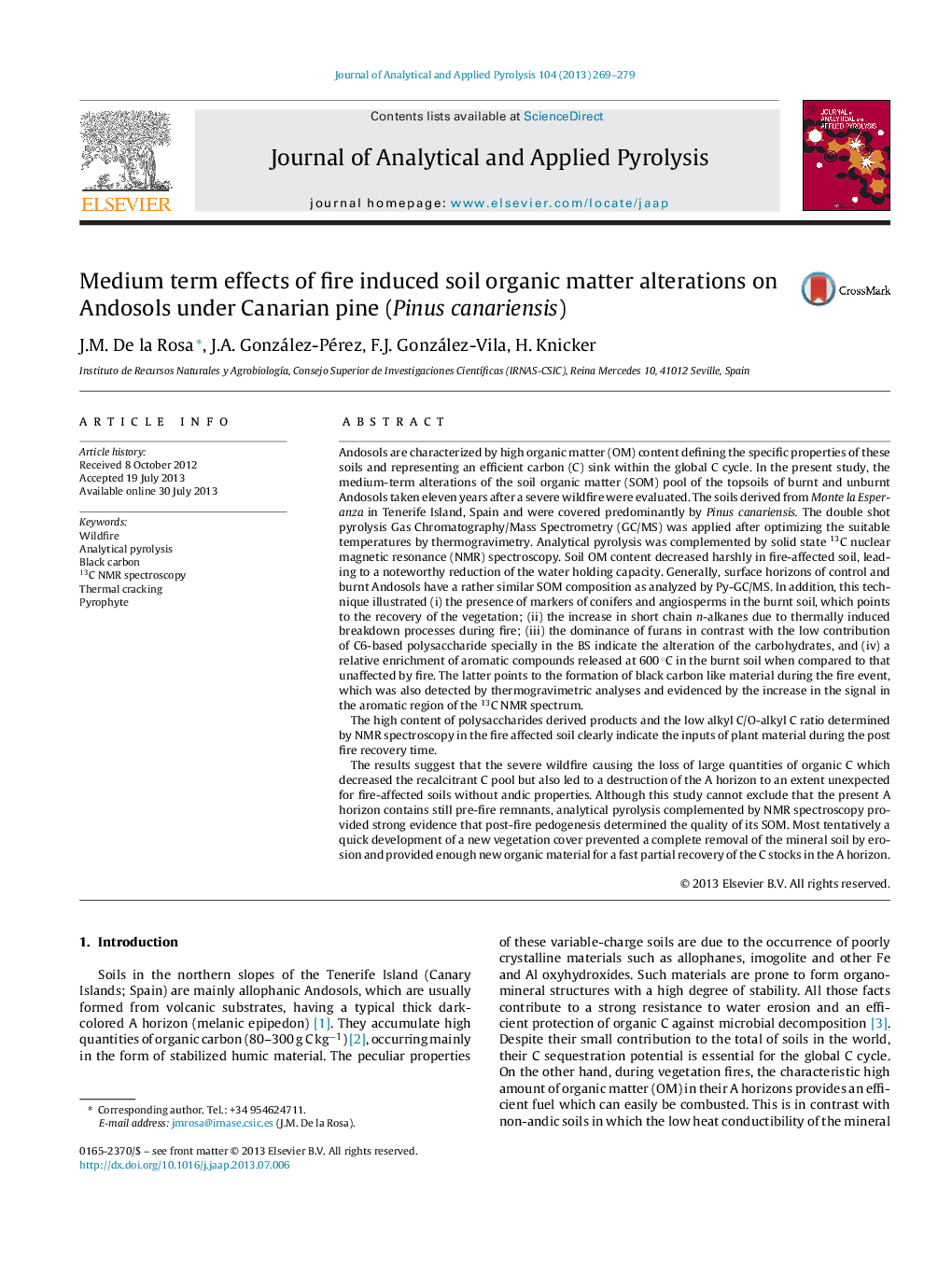| کد مقاله | کد نشریه | سال انتشار | مقاله انگلیسی | نسخه تمام متن |
|---|---|---|---|---|
| 1196788 | 1492973 | 2013 | 11 صفحه PDF | دانلود رایگان |

• Medium-term alterations in the soil organic matter (SOM) of the topsoils of burnt Andosols.
• Pyrolysis-GC/MS, thermogravimetric analysis and 13C NMR spectroscopy used to study changes into the SOM due to fire.
• Thermally induced breakdown processes and BC formation due to fire.
• Markers of vegetation recovery in HF-treated burnt Andosols shown by Py-GC/MS.
Andosols are characterized by high organic matter (OM) content defining the specific properties of these soils and representing an efficient carbon (C) sink within the global C cycle. In the present study, the medium-term alterations of the soil organic matter (SOM) pool of the topsoils of burnt and unburnt Andosols taken eleven years after a severe wildfire were evaluated. The soils derived from Monte la Esperanza in Tenerife Island, Spain and were covered predominantly by Pinus canariensis. The double shot pyrolysis Gas Chromatography/Mass Spectrometry (GC/MS) was applied after optimizing the suitable temperatures by thermogravimetry. Analytical pyrolysis was complemented by solid state 13C nuclear magnetic resonance (NMR) spectroscopy. Soil OM content decreased harshly in fire-affected soil, leading to a noteworthy reduction of the water holding capacity. Generally, surface horizons of control and burnt Andosols have a rather similar SOM composition as analyzed by Py-GC/MS. In addition, this technique illustrated (i) the presence of markers of conifers and angiosperms in the burnt soil, which points to the recovery of the vegetation; (ii) the increase in short chain n-alkanes due to thermally induced breakdown processes during fire; (iii) the dominance of furans in contrast with the low contribution of C6-based polysaccharide specially in the BS indicate the alteration of the carbohydrates, and (iv) a relative enrichment of aromatic compounds released at 600 °C in the burnt soil when compared to that unaffected by fire. The latter points to the formation of black carbon like material during the fire event, which was also detected by thermogravimetric analyses and evidenced by the increase in the signal in the aromatic region of the 13C NMR spectrum.The high content of polysaccharides derived products and the low alkyl C/O-alkyl C ratio determined by NMR spectroscopy in the fire affected soil clearly indicate the inputs of plant material during the post fire recovery time.The results suggest that the severe wildfire causing the loss of large quantities of organic C which decreased the recalcitrant C pool but also led to a destruction of the A horizon to an extent unexpected for fire-affected soils without andic properties. Although this study cannot exclude that the present A horizon contains still pre-fire remnants, analytical pyrolysis complemented by NMR spectroscopy provided strong evidence that post-fire pedogenesis determined the quality of its SOM. Most tentatively a quick development of a new vegetation cover prevented a complete removal of the mineral soil by erosion and provided enough new organic material for a fast partial recovery of the C stocks in the A horizon.
Journal: Journal of Analytical and Applied Pyrolysis - Volume 104, November 2013, Pages 269–279